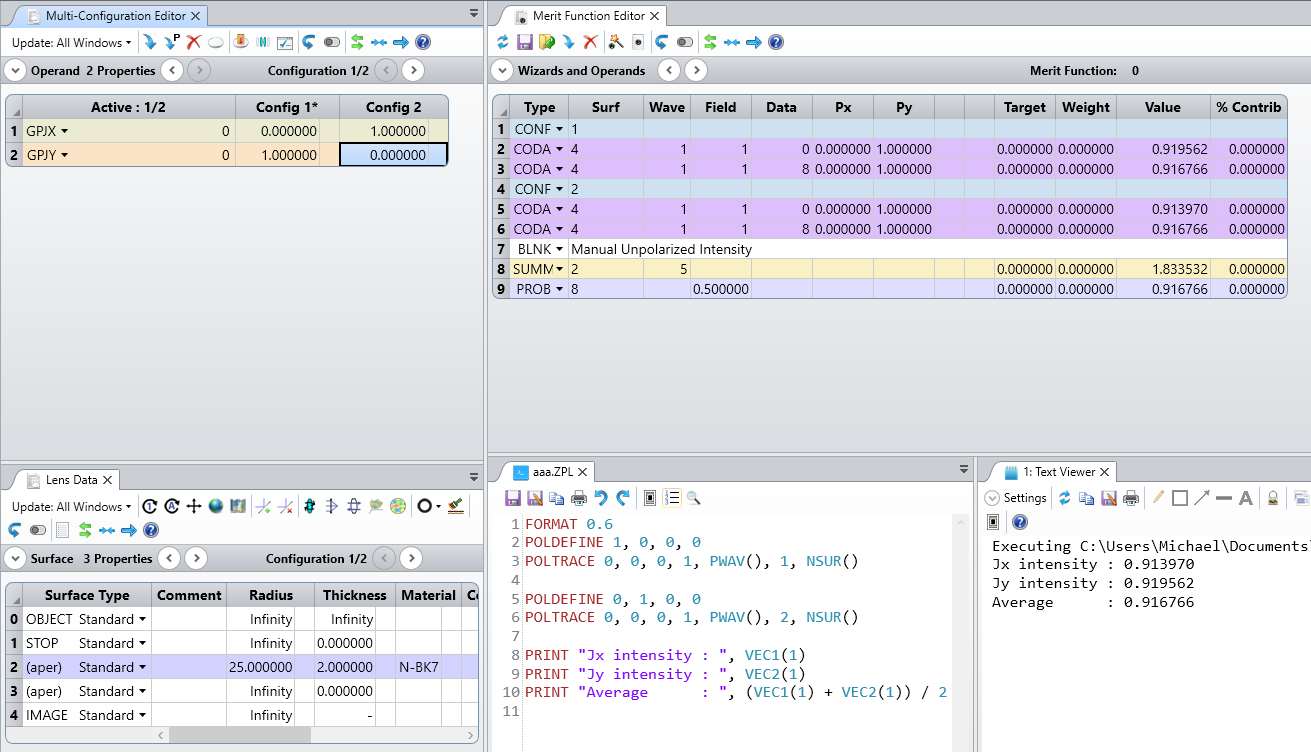From the OpticStudio manual under Defining Initial Polarization: “No matter which method is selected, the transmission results for unpolarized light will be unaffected because any two orthogonal rays may be traced to compute transmission.”
Does this mean that I can use POLDEFINE 1, 0, 0, 0 followed by a POLTRACE and then POLDEFINE 0, 1, 0, 0 followed by another POLTRACE and average those results to get an average transmission at a given wavelength?








